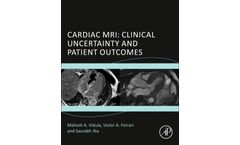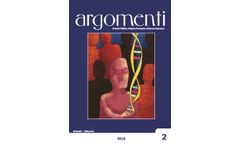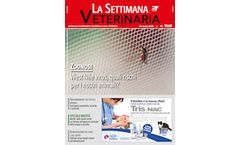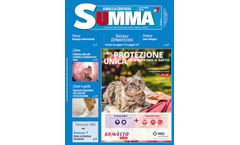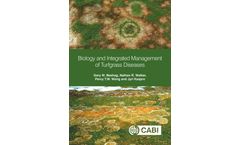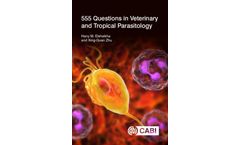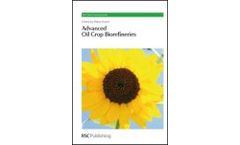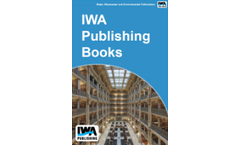Books
-
Showcase
Effects of Climate Change on Forests
Effects of Climate Change on Forests: An Evidence-Based Primer for Sustainable Management of Temperate and Mediterranean Forests presents concepts, case studies and the application of theories about forest management under climate change. It provides invaluable insight to how forest planning and management tie into the ecological functioning and resilience of the forest, and does so by utilizing ...
By Elsevier B.V
-
Showcase
Argomenti
Argomenti S.I.Ve.M.P is the official body of the Italian Union of State Veterinarians, which includes all the directors of the National Veterinary Service. This quarterly magazine, with a peculiar graphic approach, is published in 5000 copies and sent to all the Union followers, to the health, political and administrative Authorities, to representatives of universities, to associations working ...
-
Showcase
Settimana Veterinaria
La Settimana Veterinaria is part of the Italian veterinary editorial sector from 25 years now and is the first weekly professional magazine for vets. With 45 issues per year, every week it offer news concerning the professional, technical, scientific, political and trade union's world, with reports of congresses, in-depth reviews and interviews. Continuing education is guaranteed by ...
-
Showcase
Veterinary Companion Animals Monthly Magazine
The veterinary monthly magazine Summa is made up by two magazines, one of which is completely devoted to pets. ...
-
Showcase
Veterinary Livestock Monthly Magazine
The veterinary monthly magazine Summa is made up by two magazines, one of which is completely devoted to livestock. Thanks to its captivating graphic layout and to a stronger collaboration with French, English and Italian authors, Summa is able to give vets the most up-to-date scientific information in order to meet the needs of a profession requiring a more and more accurate specialization in ...
-
Biology and Integrated Management of Turfgrass Diseases
Cultivated turfgrass is an assemblage of mown, perennial grasses or prostrate-growing forb plants and a suite of microbes all competing with each other in a common environment. This book approaches turfgrass diseases from an ecological perspective and explains with examples how wild plants and microbes have co-evolved. It addresses the identification, biology and integrated management of both ...
-
Reducing greenhouse gas emissions from livestock production
Cattle are a major source of non-CO2 greenhouse gas emissions: methane (CH4), nitrous oxide (N2O) and ammonia (NH3). This collection reviews the range of research on ways of reducing greenhouse gas (GHG) emissions from livestock production. Part 1 reviews the genetics, measurement and modelling of methane emissions from cattle. Chapters cover what we know about rumen function and genetics in ...
-
Cannabis Sight Glass Buyer's Guide
Learn the basics of oil extraction safety issues, how clamps, sight glasses and lights can help, and how to select the right products for your solution. Download our guide now by completing the form to the ...
-
Fertilization and Irrigation - Theory and Best Practices
The book covers the essentials of plant nutrition and irrigation management. Throughout the 232 pages of the book, the author, Guy Sela, shares his knowledge on the most important aspects of crop nutrition and irrigation, including: Plant nutrients, fertilizer management practices, interpretation of soil analysis, irrigation water quality, fertigation, irrigation scheduling and more... ...
By Cropaia
-
555 Questions in Veterinary and Tropical Parasitology
Parasites are a major issue affecting animal health, welfare, and economic productivity. This book, designed to help you study anywhere, with any amount of time, provides 555 questions to test your ...
-
Johnny Appleseed and the American Orchard: A Cultural History
DOI: 10.1080/2325548X.2014.954195. Geoffrey L. Buckleya. pages 125-126. Publishing models and article dates explained. Published online: 16 Oct ...
-
Sustainable Micro Irrigation Management for Trees and Vines
This valuable book, the third volume in the Research Advances in Sustainable Micro Irrigation series, focuses on sustainable micro irrigation management for trees and vines. It covers the principles as well as recent advances and applications of micro irrigation ...
-
Management, Performance, and Applications of Micro Irrigation Systems
Management, Performance, and Applications of Micro Irrigation Systems, the fourth volume in the Research Advances in Sustainable Micro Irrigation series, emphasizes sustainable and meaningful methods of irrigation to counter rampant water scarcity. In many parts of the world, this scarcity significantly affects crop yield, crop quality, and, consequently, human quality of life. This important ...
-
Sustainable Practices in Surface and Subsurface Micro Irrigation
This new book,Sustainable Practices in Surface and Subsurface Micro Irrigation, offers a vast amount of knowledge and techniques necessary to develop and manage a drip/trickle or micro irrigation system. The information covered has worldwide applicability to irrigation management in ...
-
The Carpet of the Sun: On the Quantification of Algal Biomass
PhD Thesis in Eco-Toxicology at the Masaryk Univeristy of Brno, Czech ...
-
Evapotranspiration: Principles and Applications for Water Management
This book covers topics on the basic models, assessments, and techniques to calculate evapotranspiration (ET) for practical applications in agriculture, forestry, and urban science. This simple and thorough guide provides the information and techniques necessary to develop, manage, interpret, and apply evapotranspiration ET data to practical applications. The simplicity of the contents assists ...
-
Eddy Covariance Method for Scientific, Industrial, Agricultural and Regulatory Applications
“Eddy Covariance Method for Scientific, Industrial, Agricultural and Regulatory Applications: A Field Book on Measuring Ecosystem Gas Exchange and Areal Emission Rates”, authored by LI-COR Principal Scientist George Burba, was created to familiarize readers with the general theoretical principles, requirements, applications, and planning and processing steps of the eddy covariance method. The ...
By LI-COR
-
Management of Drip/Trickle or Micro Irrigation
This important book—the only complete, one-stop manual on microirrigation worldwide--offers knowledge and techniques necessary to develop and manage a drip/trickle or micro irrigation system. The simplicity of the contents facilitates a technician to develop an effective micro irrigation system. Management of Drip/Trickle or Micro Irrigation includes the basic considerations relating to ...
-
Advanced Oil Crop Biorefineries
In Europe, the main oil-rich crops are sunflower, rapeseed and olive which are grown primarily for food. This book discusses how to convert this whole crop into energy (fuels, power and heat), food and bioproducts (chemicals and/or materials), whilst making optimal use of the by-products generated during farming/harvesting, primary processing (oil extraction and refining) and secondary processing ...
-
Concentration Dynamics of Fecal Indicators in Hawaiian Coastal and Inland Sand, Soil, and Water during Rainfall Events
Available as eBook only The contamination of recreational waters by waterborne pathogens poses a health threat to beach users. Recently, the importance of beach sand to the biological quality of beach water has been realized and verified. This study examined how urban rainfall runoff from a tributary stream affects the concentrations of fecal indicator bacteria (FIBs) in beach sand at a marine ...
Need help finding the right suppliers? Try XPRT Sourcing. Let the XPRTs do the work for you
